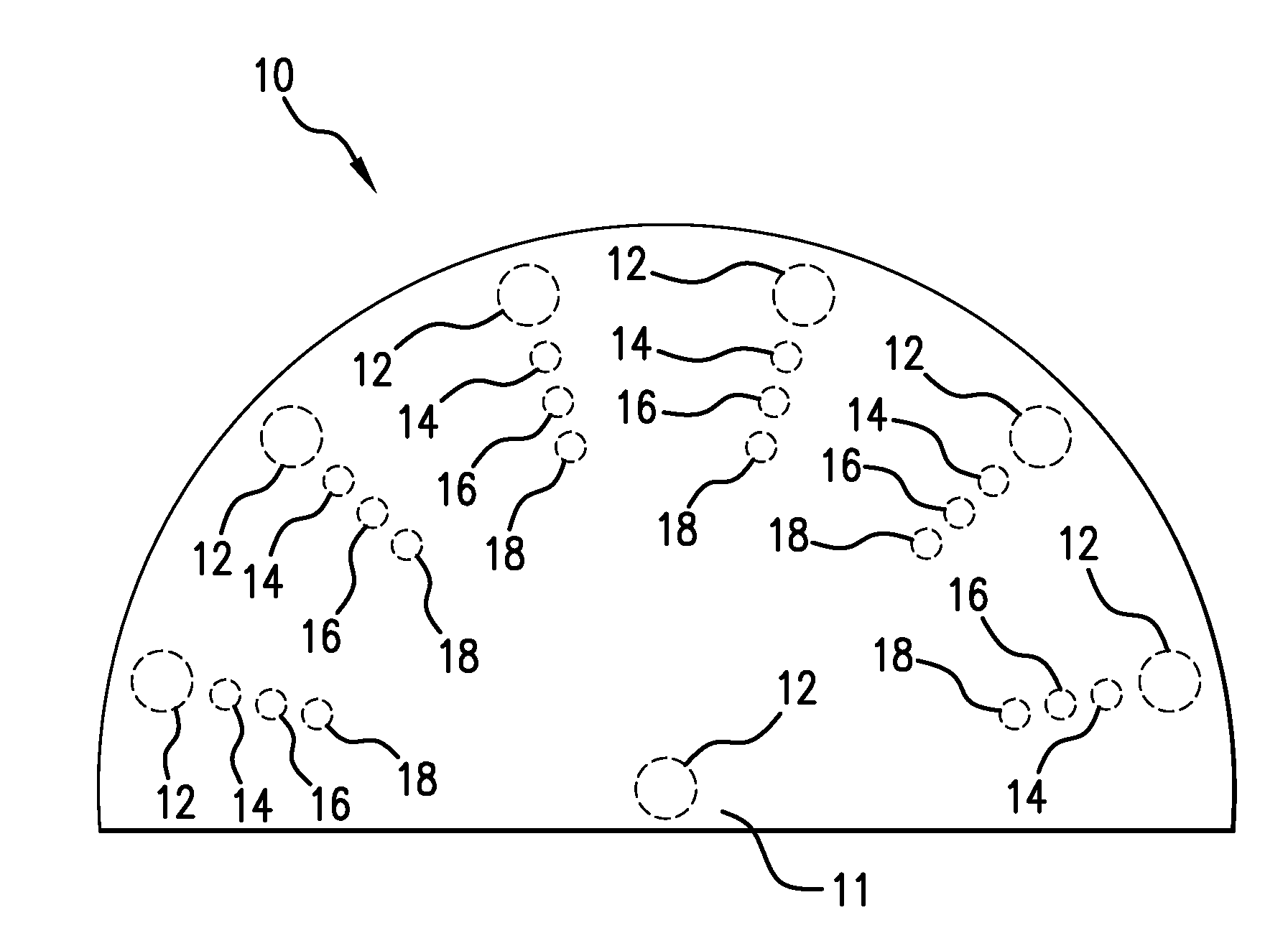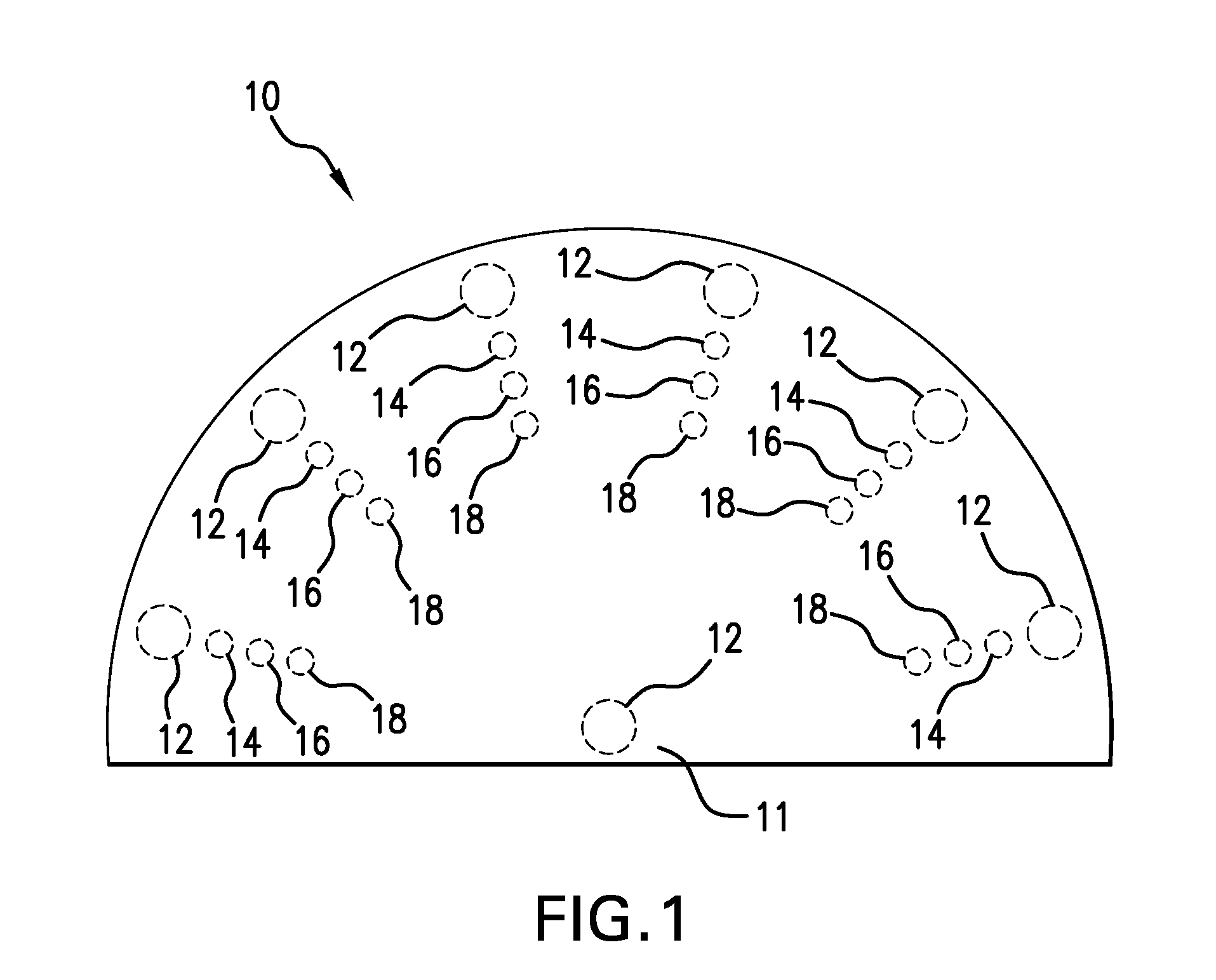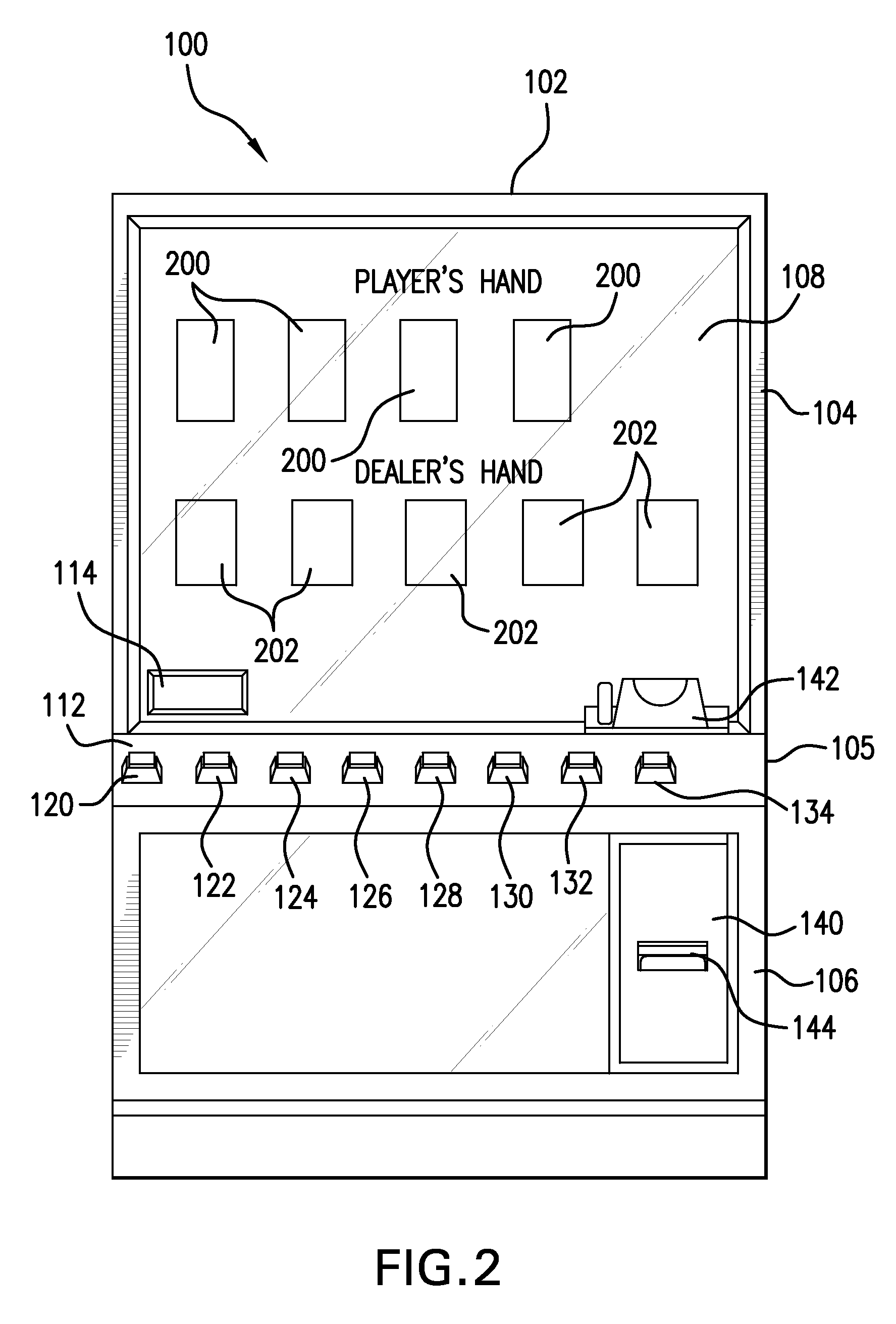Method For Playing A Card Game
a card game and card game technology, applied in the field of card game methods, can solve the problems of all other players losing their wagers, players still losing when the player, etc., and achieve the effect of generating additional unpredictability, excitement and revenu
- Summary
- Abstract
- Description
- Claims
- Application Information
AI Technical Summary
Benefits of technology
Problems solved by technology
Method used
Image
Examples
first embodiment
[0028]In accordance with this embodiment of the invention, the first step of the game is to provide a plurality of decks of cards. Next, the player, or each player, places his Ante. The minimum and maximum amount of the Ante is determined by the house. Next, the dealer deals an initial two-card hand. Preferably, the dealer deals the initial two-card hand in a left-to-right motion starting from the dealer's left. The cards are dealt face down. The dealer also deals himself an initial two-card hand. The player then views his cards and then decides whether to stay or fold. If the player decides to stay, he must place a bet to receive additional cards. Next, it is determined if the point value of the player's initial two-card hand is fifteen. If the player's hand has a point value of fifteen, then the player is provided with an opportunity to double down on the player's bet and take only one additional card. The additional card is dealt face up. In this case, the player will complete th...
example 1
[0030]
Dealer's Hand:Four Cards(4, 8, 8, ACE)Point Value: 21Player:Four Cards(3, 5, 7, 7)Point Value: 22Winner: Player
example 2
[0031]
Dealer's Hand:Five(2, 4, 4, 7, 8)Point Value: 25Player:Four Cards(3, 4, 7, 9)Point Value: 23Winner: Dealer
PUM
 Login to View More
Login to View More Abstract
Description
Claims
Application Information
 Login to View More
Login to View More - R&D
- Intellectual Property
- Life Sciences
- Materials
- Tech Scout
- Unparalleled Data Quality
- Higher Quality Content
- 60% Fewer Hallucinations
Browse by: Latest US Patents, China's latest patents, Technical Efficacy Thesaurus, Application Domain, Technology Topic, Popular Technical Reports.
© 2025 PatSnap. All rights reserved.Legal|Privacy policy|Modern Slavery Act Transparency Statement|Sitemap|About US| Contact US: help@patsnap.com



